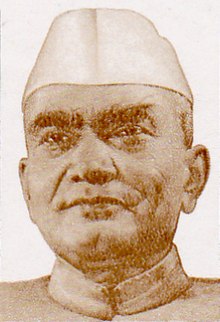
Back কৈলাশ নাথ কাটজু Bengali/Bangla קליש נאת' קתג'ו HE कैलाश नाथ काटजू HI कैलाश नाथ काटजू MR ᱠᱚᱭᱞᱟᱥ ᱱᱟᱛᱷ ᱠᱟᱛᱡᱩ SAT கைலாசு நாத் கட்சு Tamil కైలాష్ నాథ్ కట్జూ Tegulu
Kailash Nath Katju | |
|---|---|
 | |
| 3rd Chief Minister of Madhya Pradesh | |
| In office 31 January 1957 – 11 March 1962 | |
| Preceded by | Bhagwantrao Mandloi |
| Succeeded by | Bhagwantrao Mandloi |
| 4th Minister of Defence | |
| In office 10 January 1955 – 30 January 1957 | |
| Prime Minister | Jawaharlal Nehru |
| Preceded by | Baldev Singh |
| Succeeded by | V. K. Krishna Menon |
| 4th Minister of Home Affairs | |
| In office 5 November 1951 – 10 January 1955 | |
| Prime Minister | Jawaharlal Nehru |
| Preceded by | C. Rajagopalachari |
| Succeeded by | Govind Ballabh Pant |
| 2nd Governor of West Bengal | |
| In office 21 June 1948 – 1 November 1951 | |
| Chief Minister | Bidhan Chandra Roy |
| Preceded by | C. Rajagopalachari |
| Succeeded by | Harendra Coomar Mookerjee |
| 1st Governor of Odisha | |
| In office 15 August 1947 – 20 June 1948 | |
| Chief Minister | Harekrushna Mahatab |
| Preceded by | Chandulal Madhavlal Trivedi |
| Succeeded by | Asaf Ali |
| Personal details | |
| Born | 17 June 1887 Jaora, Jaora State, British India (present-day Madhya Pradesh, India) |
| Died | 17 February 1968 (aged 80) Allahabad, Uttar Pradesh, India |
| Political party | Indian National Congress |
| Spouse | Rup Kishori |
| Children | 5; including Shiva Nath Katju |
| Alma mater | Allahabad University |
| Occupation |
|
Kailash Nath Katju (17 June 1887 – 17 February 1968)[citation needed] was a prominent politician of India. He was the Governor of Odisha and West Bengal, the Chief Minister of Madhya Pradesh, the Union Home Minister and the Union Defence Minister. He was also one of India's most prominent lawyers. He was part of some of the most notable cases of his times, including the Indian National Army trials. Katju joined the Indian independence movement early on and spent several years incarcerated with fellow independence activists for his activities.